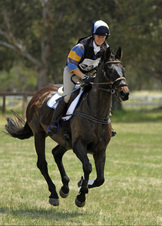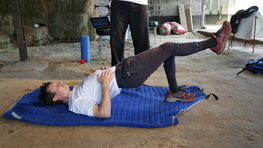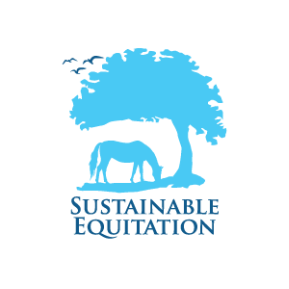
As riders we tend to forget to treat ourselves as athletes – always prioritising the health, soundness and welfare of our equine partners. As the sport progresses rapidly into the modern era, there are more and more professional riders who derive their income from being at the top of the game. It is this increase in professionalism that has seen a shift in the attitude of the world’s top riders towards fitness. As the sport becomes more commercial, longevity is becoming more important to riders.
Sydney Olympian Amanda Ross confirms “we can actively compete at top level for a lot longer than athletes in most other sports. We need to help our bodies to ensure longevity in the sport.”
Not only will looking after our bodies as athletes help us last longer and suffer fewer injuries, it also makes us much more effective in the saddle.
British based Human Performance Coach, Jon Pitts, has based his whole business, Fit to Ride, on this idea and now conducts clinics throughout Australia and the world, helping riders learn how to use their bodies correctly and efficiently.
Since breaking her pelvis, Australian Olympic eventing rider Sonja Johnson has incorporated stretches and exercises - both on and off the horse - under Jon’s advice, while British and Australian eventers William Fox Pitt, Bill Levett and Lucinda Fredericks recognise the need to regularly stretch. The more adventurous, like British-based Australian eventer Paul Tapner and Dutch dressage rider Adelinde Cornelison, regularly like to challenge their balance and strength using a fit-ball to make sure they have what they need when it counts.
To give you an idea of the stress riders’ bodies are under while riding, British Four Star Event rider Francis Whittington’s recent second place at the British Eventing Open saw a heart rate spike of 184 beats per minute and an average of around 130 beats per minute over the course of the 12 minute cross country.
Sydney Olympian Amanda Ross confirms “we can actively compete at top level for a lot longer than athletes in most other sports. We need to help our bodies to ensure longevity in the sport.”
Not only will looking after our bodies as athletes help us last longer and suffer fewer injuries, it also makes us much more effective in the saddle.
British based Human Performance Coach, Jon Pitts, has based his whole business, Fit to Ride, on this idea and now conducts clinics throughout Australia and the world, helping riders learn how to use their bodies correctly and efficiently.
Since breaking her pelvis, Australian Olympic eventing rider Sonja Johnson has incorporated stretches and exercises - both on and off the horse - under Jon’s advice, while British and Australian eventers William Fox Pitt, Bill Levett and Lucinda Fredericks recognise the need to regularly stretch. The more adventurous, like British-based Australian eventer Paul Tapner and Dutch dressage rider Adelinde Cornelison, regularly like to challenge their balance and strength using a fit-ball to make sure they have what they need when it counts.
To give you an idea of the stress riders’ bodies are under while riding, British Four Star Event rider Francis Whittington’s recent second place at the British Eventing Open saw a heart rate spike of 184 beats per minute and an average of around 130 beats per minute over the course of the 12 minute cross country.

His maximum heart rate (HRmax) could be calculated to be approximately 185 beats per minute. The HRmax is the highest heart rate an individual can achieve without severe cardiac problems through exercise stress. Since the maximum heart rate generally decreases with age, the most widely cited formula for HRmax is HRmax = 220 – age. Although attributed to various sources, this formula is widely thought to have been devised in 1970 by Dr. William Haskell and Dr. Samuel Fox.
There are various percentage “zones” for your heart rate for training effect including recovery, aerobic training and anaerobic training. It is generally understood that there will be a training effect if your heart rate is above 70% of maximum and above 95% is often considered the “red zone”.
The fact that Francis’ heart rate reached a peak of just one beat per minute below is HRmax and his average heart rate throughout the round was 70% of his maximum indicates that this was a period of high stress for his body. This provides some insight into the importance of cardio-vascular fitness. A less tired rider is also a better thinker and decision maker – which is not only the difference between winning or losing but often a matter of safety in the saddle.
If a rider is conditioned to working with a heart rate of over 70%, longer periods of increased heart rate will be maintained without fatiguing. After all, the heart is a muscle, just like every other muscle in the body, it needs to be used and conditioned to get maximum from it.
As well as cardiovascular fitness, increasing strength and endurance - in other words your muscles' ability to last when load is placed upon them - will also contribute to recovery and fatigue.
“The older you get the harder you fall. We don’t recover quite like we did and therefore have to work at preparing our body for the exertions of competing,” said Francis.
The British Cycling coach Dave Brailsford coined the phrase 'marginal gains' - the ability to look at all the smaller details that together form a major difference between riders and their competition – with this in mind it could be said that rider fitness is a major area that has been overlooked for too long.
There is more information available now than ever before on fitness and it is right at our finger-tips. Type in ‘Pilates equestrian’ or ‘rider fitness’ on Google and any number of YouTube tutorials, articles and exercises will come up. Now, all riders have to do is to convince themselves to use them!
SW
Reproduced with kind permission from Hoofbeats Magazine www.hoofbeats.com.
Original article by Sophie Warren published in the Feb/March 2015 edition.
There are various percentage “zones” for your heart rate for training effect including recovery, aerobic training and anaerobic training. It is generally understood that there will be a training effect if your heart rate is above 70% of maximum and above 95% is often considered the “red zone”.
The fact that Francis’ heart rate reached a peak of just one beat per minute below is HRmax and his average heart rate throughout the round was 70% of his maximum indicates that this was a period of high stress for his body. This provides some insight into the importance of cardio-vascular fitness. A less tired rider is also a better thinker and decision maker – which is not only the difference between winning or losing but often a matter of safety in the saddle.
If a rider is conditioned to working with a heart rate of over 70%, longer periods of increased heart rate will be maintained without fatiguing. After all, the heart is a muscle, just like every other muscle in the body, it needs to be used and conditioned to get maximum from it.
As well as cardiovascular fitness, increasing strength and endurance - in other words your muscles' ability to last when load is placed upon them - will also contribute to recovery and fatigue.
“The older you get the harder you fall. We don’t recover quite like we did and therefore have to work at preparing our body for the exertions of competing,” said Francis.
The British Cycling coach Dave Brailsford coined the phrase 'marginal gains' - the ability to look at all the smaller details that together form a major difference between riders and their competition – with this in mind it could be said that rider fitness is a major area that has been overlooked for too long.
There is more information available now than ever before on fitness and it is right at our finger-tips. Type in ‘Pilates equestrian’ or ‘rider fitness’ on Google and any number of YouTube tutorials, articles and exercises will come up. Now, all riders have to do is to convince themselves to use them!
SW
Reproduced with kind permission from Hoofbeats Magazine www.hoofbeats.com.
Original article by Sophie Warren published in the Feb/March 2015 edition.

 RSS Feed
RSS Feed
